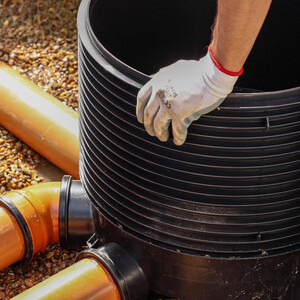
Geotextiles Explained
Geotextiles were originally intended to be an alternative to granular soil filters. They’re also known as filter fabrics, which was their original intended name. They first came into prominent use during the 1950s when Geotextiles were placed behind precast concrete seawalls. They were also used under precast concrete erosion control blocks, beneath large stone riprap, and in other erosion control situations.
What do Geotextiles do?
The function of Geotextiles is to be porous enough to allow filtration (6-30%) whilst still retaining enough strength to retain soil.
Geotextiles are widely used around the world and support many civil engineering jobs, such as roads, airfields, railroads, embankments, retaining structures, reservoirs, canals, dams, bank protection, coastal engineering and construction sites. In building demolition, geotextile fabrics is used in conjunction with steel wire fencing to contain explosive debris.
Geotextiles are also used for sand dune armouring to protect upland coastal property from storm surges, wave action and flooding. A large sand-filled container (SFC) within the dune system prevents storm erosion from proceeding beyond the SFC. (See picture, left.)
Erosion control manuals comment on the effectiveness of sloped, stepped shapes in mitigating shoreline erosion damage from storms. Geotextile sand-filled units provide a “soft” armouring solution for upland property protection. Geotextiles are also used as matting to stabilise flow in stream channels and swales.
The Drainfast range of geotextiles come in two different types;
- Woven: Usually black in colour, used for all general applications such as driveways, roads, paths etc. The dark colour has added benefits including weed suppression. The product is strong and very durable.
- Non-woven: Usually white in colour with a higher level of permeability, non-woven geotextile is better for use with land-drain and soakaway systems. The product is thicker, thermally bonded, strong and very durable. It has the appearance of felt.
Geotextiles are great for ground stabilisation and covering, for example, when used with soakaway systems to avoid silt clogging or to cover land drainage to stop the ingress of silt. Geotextiles also separate soil from sub-base materials, meaning they are a more effective and efficient means of creating a hard-standing sub-base.
How do Geotextiles Protect the World’s Oldest Footprints?
In 1976, archaeologist Mary Leakey, discovered a 75-foot line of fossilised footprints estimated to be over 3.7 million years old. They had been preserved in volcanic ash in what we now call Laetoli, Tanzania, Eastern Africa.
The footprints show three individuals traversing at a normal gait for modern humans, one following behind in the footsteps and one walking parallel. It also shows that these individuals had arches to their feet and did not have the jointed big toe of apes, and therefore much similar to modern human feet.
In an effort to preserve the footprints as much as possible, the track was re-buried in 1993 using Geotextiles to protect the footprints from erosion, rain, and Acacia tree roots. This allows the trackway surface to breathe, and protects it against encroaching root growth.



